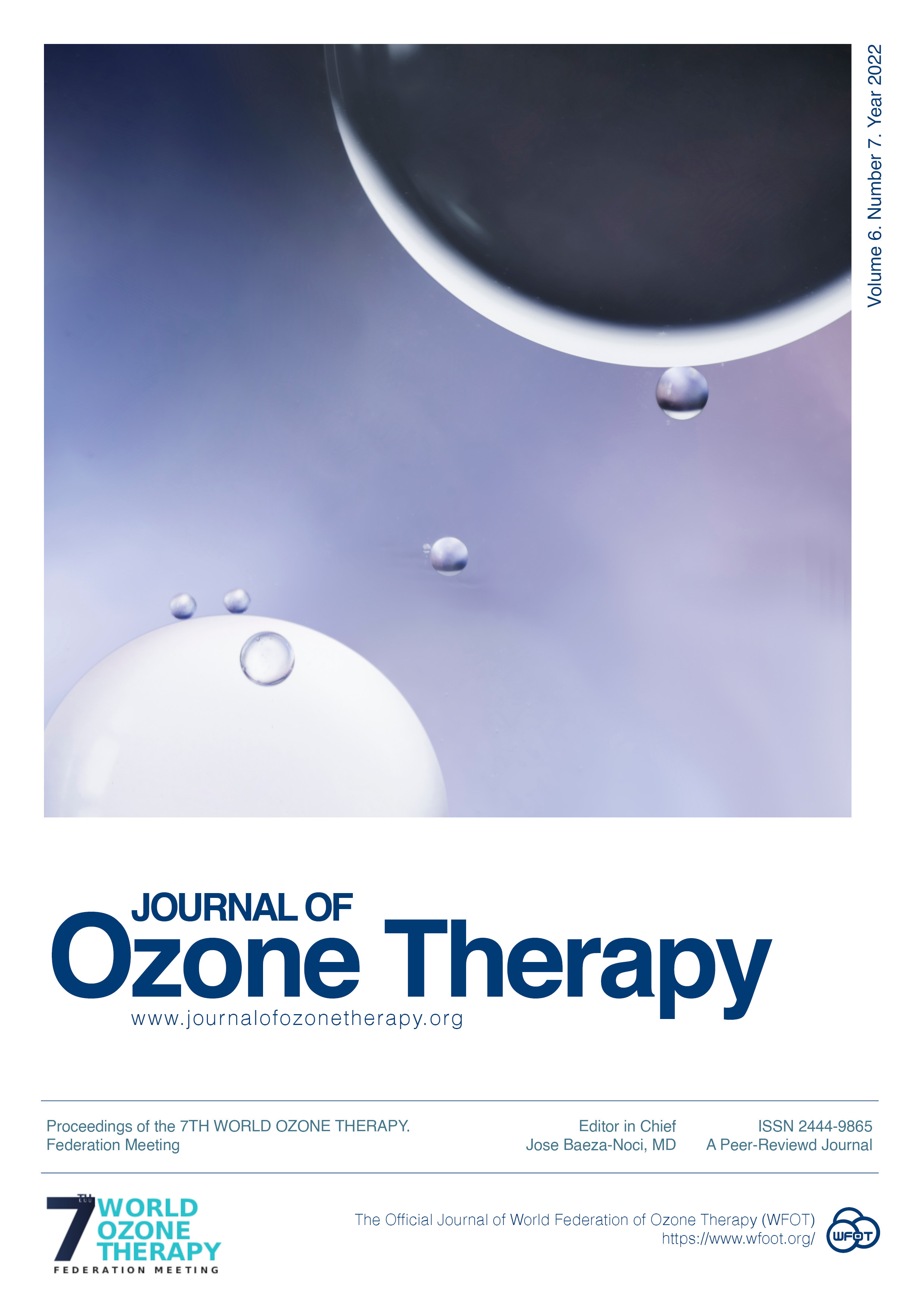Back pain “not just herniated disc”: results of treatment with oxygen-ozone therapy in selected applications.
DOI:
https://doi.org/10.7203/jo3t.6.7.2022.25976Palavras-chave:
medical ozone, spine diseases, chronic pain Resumo
Resumo
Low back pain and lumbosciatica are highly disabling pathologies, more and more widespread in every social category and manifest themselves at an
increasingly precocious age. They can be supported by numerous different vertebral pathologies, often concomitant: diseases of the disc, of the facet joints, spondylolysis (with or without listesis), somatic and interapophyseal arthrosis, stenosis of the vertebral canal, radicular and synovial cysts, meningiomas, primary or metastatic neoplastic pathology etc.
In order to choose the best therapy, in cases of low back pain and / or sciatica pain, a precise diagnosis made after a careful objective examination and supported by suitable instrumental examinations is therefore essential. In particular, in addition to standard radiograms of the spine, in these patients the Computed Tomography and / or Magnetic Resonance Imaging is essential.
In recent years, several studies have demonstrated the utility of oxygen-ozone therapy in the treatment of herniated discs with the result of herniated discs reduced in size.
In this study the authors evaluated the therapeutic results obtained in the treatment with oxygen-ozone therapy of 416 patients suffering from non-discogenic low back pain caused by pathology of the posterior vertebral compartment (facet synovitis, Baastrup syndrome, spondylolysis and spondylolisthesis, facet degeneration).
 Downloads
Downloads
Downloads
Publicado
Como Citar
-
Resumo368
-
PDF 261
Edição
Secção
Licença
Journal of Ozone Therapy applies the Creative Commons Attribution-NonCommercial 4.0 International License (CC BY NC 4.0) license to works we publish.
Under this license, authors retain ownership of the copyright for their content, but allow anyone to download, reuse, reprint, modify, distribute and/or copy the content as long as the original authors and source are cited. No permission is required from the authors or the publishers.
You may not use the material for commercial purposes.
Appropriate attribution can be provided by simply citing the original article, provide a link to the license, and indicate if changes were made.
You may do so in any reasonable manner, but not in any way that suggests the licensor endorses you or your use.




